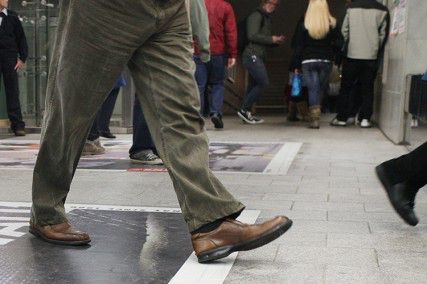
In a pair of independent reports released Wednesday, Boston was named the third most walkable city by the organization Walk Score and the ninth worst city for traffic in the country by TomTom.
Walk Score, a Seattle-based group that advocates for pedestrian accessibility, rated 2,500 cities based on the latitude-longitude ratio of a city’s walkable streets weighted by its population density, according to the report. Boston came in third with a score of 79.5 out of 100.
Brenden Kearney, spokesman for WalkBoston, an organization devoted to improving walking conditions in the Hub and in Massachusetts as a whole, said the high ranking only reinforces policies the Commonwealth does well.
“We’re pretty excited about that [the rating,]” he said. “It’s just another showing that we’re making a difference here and that Massachusetts and Boston [are] working toward [a] mass statewide mode shift goal to triple walking, biking and transit by 2030.”
The second survey, conducted by TomTom Global Positioning System Company, ranked each city based on a comparison between travel times during low-traffic hours and during high-congestion hours, based on data gathered from its navigation devices.
Boston ranked ninth worst in the U.S. with an overall congestion index of 23 percent, meaning an average of 23 percent of additional time is added to road travel due to traffic. Morning and evening rush hours adding 47 and 59 percent, respectively, of additional travel time, according to the ratings.
Adam Zand, spokesman of TomTom, said Boston’s low ranking could be attributed to summer tourism, the shutdown of roads during the aftermath of the Boston Marathon bombings, the increase of development in South Boston and fare increases in mass transit leading to more people driving.
The jump from 21st in an April 4 report to ninth in this one should not be too concerning to residents, he said.
“There’s not a lot of variety from number 21 to number nine,” he said. “There are a lot of cities between 20 and 23 percent [congestion indexes], so it isn’t that shocking that a city like Boston would jump into the top ten. So, I don’t think it’s as bad a report card as some might fear.”
James Baldwin, an assistant professor in the department of earth and environment at Boston University specializing in sustainable transportation, said the ratings are understandably related because of the city’s history.
“Boston is so walkable because it’s small and dense,” he said. “It’s an old city, so it’s got a really distinct urban core … It’s easy for everyone to get to where they want to be for shopping and getting to work, but it really makes it difficult for cars. This city was not built with cars in mind. The cars are trying to squeeze into a city which wasn’t built for them.”
Baldwin said Boston has a great network for public transportation and non-motorized transit, and it is still getting better, but there is no practical solution to making car traffic any better while maintaining car volume.
“There’s not enough space for the roads,” he said. “The only things that can be done is to make it more appealing not to drive a car … Dealing with the car congestion [that comes] with traffic is getting people off the roads and out of the cars. We can’t build our way out of congestion unless you want to tear down all these buildings.”
Several residents said the ratings were appropriate based on their personal experiences with transportation in the city.
“I drive in Boston occasionally,” said Ben Alexander, 26, a television production assistant from Fenway. “It depends on the type of day and if there’s construction, but the traffic is usually pretty bad … the construction means lanes are closed and it backs of traffic so cars can’t get through.”
Laoya Green, 34, a nurse from Dorchester, said traffic was bad at peak hours, but it is easy to work around it.
“It’s really just about timing,” she said. “Public transportation works great, and even if you’re on the bus, I never ride during rush hours. It works great, and I don’t spend much time waiting anywhere.”
Carlos Mora, 20, of Boston, said being on the road was a bad idea, but Boston is compact enough to walk.
“There are always lots of cars,” he said. “I don’t own a car, but even when I’ve had to take taxis, it’s crazy, and parking is so expensive anyway. Walking is almost always a better idea. I can get everywhere just as quickly as I would trying to get through traffic, and I’m not constantly worrying about someone weaving or hitting me in their car.”






















































































































